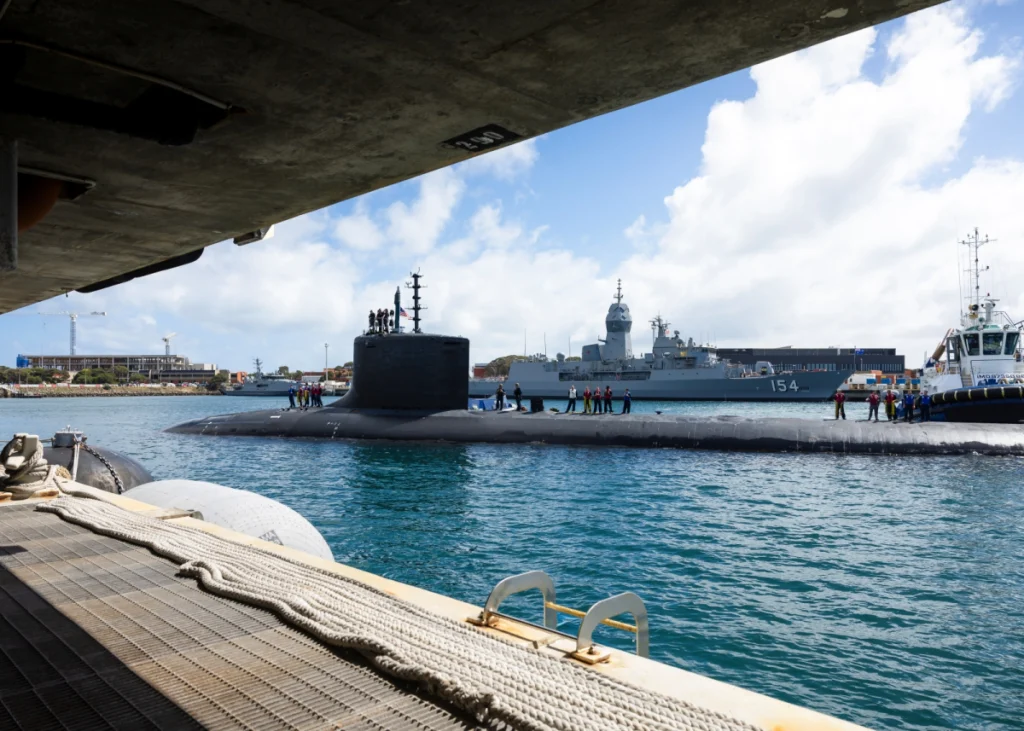Australia’s Strategic Move to Host Allied Nuclear Submarines Amid Rising Pacific Tensions
In a significant development for regional security dynamics, Australia has taken a pivotal step toward enhancing its submarine capabilities by hosting a United States nuclear-powered submarine for complex maintenance operations. The USS Vermont, a Virginia-class nuclear-powered attack submarine with Tomahawk cruise missile and torpedo capabilities, arrived at HMAS Stirling naval base in Western Australia for what officials describe as a substantial maintenance package. This event marks a critical advancement in Australia’s preparations to operate nuclear-powered submarines under the AUKUS security partnership, a trilateral agreement with the United States and United Kingdom formed amid growing concerns about China’s expanding naval presence in the Pacific region.
The maintenance operations being conducted on the USS Vermont represent far more than routine upkeep. Australian defense officials highlighted that this current Submarine Maintenance Period involves “a larger and more complex package of work” than previous collaborations, closely mirroring the type of maintenance that will be required when Australia begins hosting the Submarine Rotational Force-West (SRF-West) as early as 2027. What distinguishes this maintenance period is that Australian personnel are taking greater responsibility for conducting complex submarine maintenance on site without the support of a tender ship, demonstrating significant progress in Australia’s technical capabilities. Additionally, a contingent of 13 Australian naval officers and sailors who completed specialized nuclear submarine operations training in the United States joined the Vermont’s crew during its arrival, putting their newly acquired expertise into practice.
This development comes at a time of heightened strategic significance in the Indo-Pacific region, where China possesses the world’s largest navy by vessel count and has been expanding its military footprint across the Pacific, including recent circumnavigation of Australia. Under the AUKUS agreement, Australia is preparing to operate and maintain conventionally-armed, nuclear-powered submarines with assistance from its American and British allies. The partnership includes plans for Australia to purchase three American submarines and support the rotational presence of up to one British and four American nuclear-powered submarines at HMAS Stirling. This buildup of Australia’s submarine capabilities is widely interpreted as a response to changing security dynamics in the region, though China’s Foreign Ministry did not immediately respond to requests for comment on these developments.
Australian defense leadership has emphasized the strategic importance of this milestone. Vice Admiral Jonathan Mead, director general of the Australian Submarine Agency, stated, “I can’t overstate the value of training and working with AUKUS counterparts, and applying that training at our base while testing our infrastructure and systems. It strengthens our ability to operate and sustain nuclear-powered submarines in Australia.” His remarks underscore how this visit allows Australia to test and enhance its nuclear stewardship systems while drawing upon the operational experience and safety standards of its AUKUS partners. Vice Admiral Mark Hammond, chief of the Royal Australian Navy, further characterized the Vermont’s visit as “another tangible example of the strong partnership between the navies of Australia, the United States and the United Kingdom,” reflecting “deep trust, technical cooperation, and shared commitment between our nations to maintaining a stable, secure, and prosperous Indo-Pacific region.”
The Australian government views the Vermont’s maintenance period as a crucial learning opportunity that will help prepare the nation for its future submarine capabilities. This hands-on experience allows Australian personnel to develop the specialized skills and systems needed to support nuclear-powered submarines, a technology Australia has never previously operated. The Vermont’s visit represents a significant step in Australia’s ambitious journey toward operating its own nuclear-powered submarine fleet, which will fundamentally transform the Royal Australian Navy’s capabilities and strategic reach. By taking responsibility for coordinating, supporting, and delivering maintenance on an American nuclear-powered submarine, Australia is demonstrating its commitment to becoming a more capable and self-reliant partner within the AUKUS framework.
Looking ahead, questions remain about whether the United States can expedite the delivery schedule for nuclear-powered submarines to Australia. To help address production constraints, Australia has committed to contributing $2 billion by the end of the year to expand and modernize the U.S. submarine industrial base. This investment reflects the urgency with which Australia views the development of its submarine capabilities and the importance of strengthening alliance cooperation in submarine technology. As this initiative progresses, the three AUKUS nations continue to deepen their defense collaboration in what represents one of the most significant shifts in Australia’s defense posture in decades—a transformation clearly shaped by evolving power dynamics in the Indo-Pacific region and collective concerns about maintaining regional stability and security in the face of China’s growing naval power.


